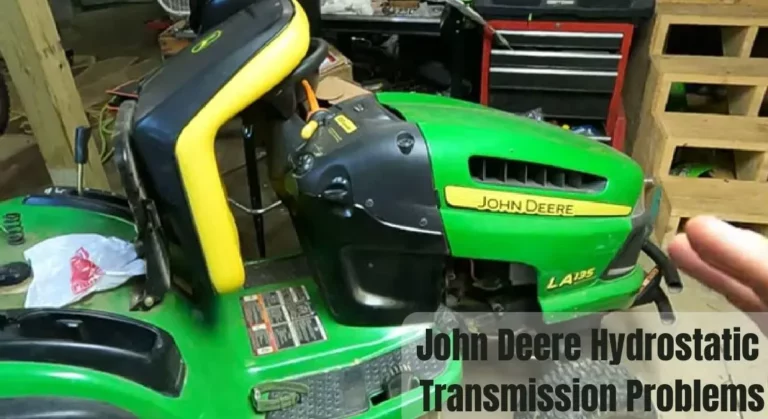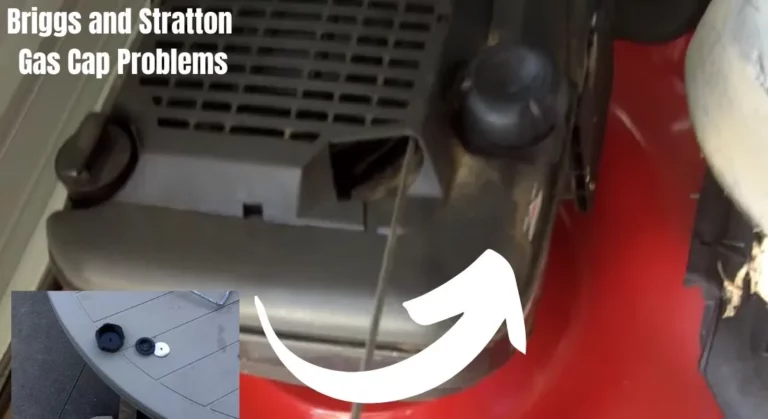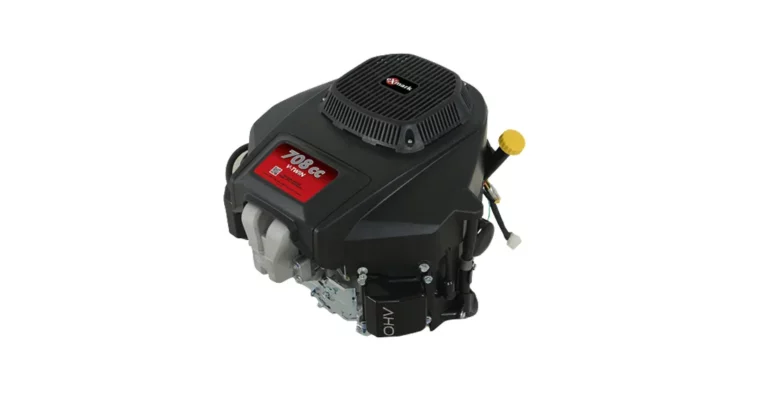Kohler Ignition Coil Problems: How to Fix it?
Kohler mower engine’s generally have very low failure rates on the ignition coil. However, coil replacements on the Kohler engines are quite prominent.
This is because of the wrong diagnosis of the problem. Most symptoms include difficulty starting the engine, poor performance, fuel consumption and engine stuttering.
Moreover, it is not just a coil, but rather a module. Because within that coil there is a microchip that turns it on & off 3,600 times a minute or thereabouts.
In this article, you will find more about these kohler ignition coil problems and how to fix them.
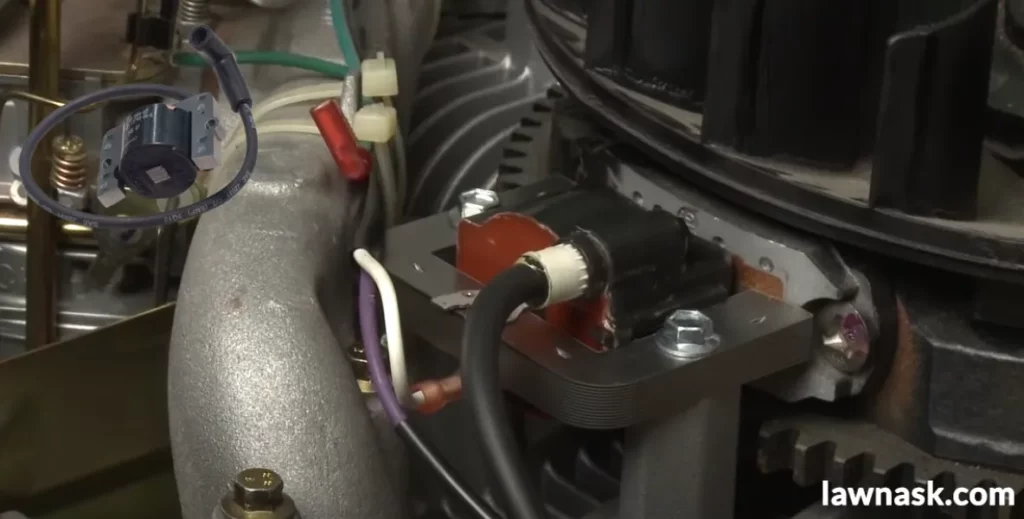
Understanding the Function of an Ignition Coil
In Kohler engines, an ignition coil converts the low voltage from the battery into high voltage. This high voltage is required to create an electric spark in the spark plug.
The electric spark ignites the fuel in the engine, causing it to turn on and power the mower.
The ignition coil is an important part of the engine’s ignition system because it ensures that the spark plugs receive the high voltage required for combustion to take place.
Without a working ignition coil, the engine may not start or may run poorly, resulting in performance and fuel efficiency issues.
Common Signs of Kohler Ignition Coil Problems And Their Causes
There are some clear indications in a mower’s performance when ignition coil problems occur. These are as follows:
1. Poor Start
There is difficulty starting the engine or the engine not starting at all. In some cases, the engine may start and then quickly stall
-Reason
If the spark plugs are not receiving the necessary high voltage to ignite the fuel-air mixture, the engine may not start.
2. Engine Misfires
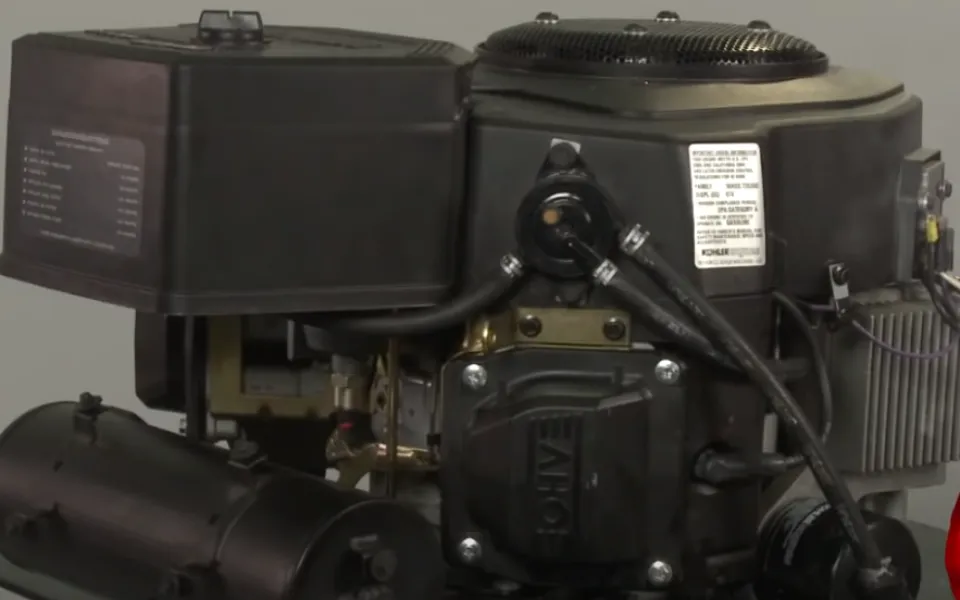
Engine misfires are one of the most common symptoms of ignition coil problems. Misfires happen when the engine skips one or more combustion cycles, resulting in a loss of power and acceleration. There may be noticeable shaking and vibrations.
-Reason
A faulty ignition coil can deliver an inconsistent spark to the spark plugs, resulting in incomplete combustion of the fuel-air mixture. The engine may run rough as a result.
3. Engine Stalling
Engine stalling is another common symptom of ignition coil problems. The engine may abruptly stop running, often without warning.
-Reason
When the spark plugs are not receiving the high voltage required to ignite the fuel-air mixture, the engine shuts down.
4. Poor Fuel Efficiency
You will notice that your mower has poor fuel efficiency.
-Reason
When the engine does not fire on all cylinders, the engine must work harder to compensate. This results in increased fuel consumption.
Furthermore, a faulty ignition coil can result in incomplete combustion of the fuel-air mixture. This wastes fuel and decreases fuel efficiency.
5. Engine Backfiring
Unburnt fuel enters the exhaust system and causes the Kohler engine to backfire. The engine starts fine and then sputters periodically.
-Reason
Backfiring occurs when the combustion cycle of an engine reverses. This causes an explosion in the intake or exhaust system.
6. Check Engine Light
A failing ignition coil can cause the check engine light to come on.
-Reason
In modern vehicles, the check engine light is part of the onboard diagnostics system and can indicate a variety of issues.
Misfires can occur when the ignition coil fails. This causes the check engine light to illuminate.
Note: The 1st ,2nd ,3rd and 5th problems are also sometimes called “dying coil” symptoms.
Related Post: Lawn Mower Ignition Switch Problems and How to Fix Them
How to Test a Kohler Ignition Coil?
Testing a Kohler ignition coil is a straightforward process that can be done using a multimeter. Here are the steps to test a Kohler ignition coil:
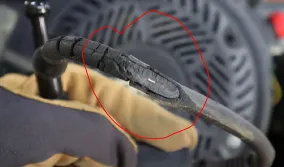
- First, disconnect the spark plug lead from the spark plug. Make sure the engine is turned off. Inspect for signs of damage. If it is damaged, this will need replacing.
- Now attach the test tool. You can add a jumper wire to ground if you like. Keep the spark plug installed.
- Pull the starter rope and see if the spark jumps the gap. If it does, the system is good. If it doesn’t, there is a problem. Continue the testing.
- Disconnect the kill lead from the ignition module and pull the starter rope again. Check for the spark jumping gap. If it doesn’t, inspect the kill circuit components.
- The most prominent components of a kill circuit to inspect are the kill switch, oil sensor, oil alert unit etc.
- Remove the blower housing to access the ignition module. Inspect kill leads and check if there are any shorts to ground. A no spark at this stage requires an ignition module replacement.
You can also use a multimeter as follows:
- Remove the spark plug wire from the plug.
- Set the ohms setting on your multimeter.
- Connect the red lead of the multimeter to the positive terminal of the ignition coil and the black lead to the negative terminal.
- Check the multimeter reading. A healthy ignition coil should have a resistance between 2.5 and 5 ohms.
- If the reading falls within the expected range, you can perform a secondary test by measuring the resistance between the positive terminal and the ignition coil’s metal casing.
- This reading should be either infinite or extremely high.
Any deviation indicates a faulty ignition coil.
Fixing Kohler Ignition Coil Problems: Replacement of the Bad Ignition Coil
The ignition coil is a part that should be replaced when it goes bad or causes problems. Often you may need to change the spark plugs. But that is usually an additional troubleshooting step to coil replacement.
Here’s how you can replace the ignition coil:
- Turn off the engine and let it cool down. Disconnect the spark plug wire to ensure that the engine cannot accidentally start.
- The ignition coil is located near the flywheel on the opposite side of the engine from the carburetor. Remove the cover to access the coil.
- Disconnect the wires that are attached to the coil. There may be one or two wires, depending on the model of the engine.
- Remove the mounting screws that hold the ignition coil in place. Depending on the model of the engine, there may be one or two screws.
- Remove the ignition coil from the engine gently. You may need to wiggle it a little to get it loose from the flywheel.
- Install the new ignition coil. The process follows the reverse order of removal. Make sure the coil is properly positioned and the mounting screws are tight.
- Reconnect the wires, cover and spark plug and then you have a new ignition coil on your Kohler engine.
Related Post: What Are the Symptoms of a Blown Head Gasket on a Kohler Engine?
FAQs
Can a bad ignition coil cause a Kohler mower engine to overheat?
No, an ignition coil does not directly cause engine overheating. However, if the coil fails to function properly, the engine will run poorly, potentially leading to overheating.
How much does it cost to replace an ignition coil in a Kohler mower engine?
The cost of replacing an ignition coil varies depending on the model of the mower and the location of the repair shop. In general, it can range between $50 and $150.
Can a faulty spark plug cause Kohler Ignition Coil problems?
A faulty spark plug can prevent the proper delivery of the ignition spark. Which will cause ignition system trouble. But this cannot directly affect the ignition coil. However, it may do so indirectly.
What is the difference between an OEM Kohler Ignition Coil and an aftermarket one?
Kohler manufactures an OEM ignition coil that is specifically designed for use with Kohler engines. A third-party company manufactures an aftermarket ignition coil, which may be designed for use with a variety of engine brands. But its effect and the performance of the mower are not correlated.
What is the warranty on a Kohler Ignition Coil?
The warranty on a Kohler ignition coil can vary depending on the specific model and the manufacturer. Generally, it ranges from 1 to 3 years.
Related Posts:

